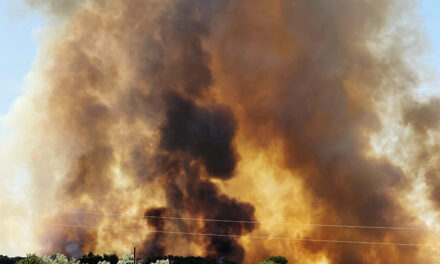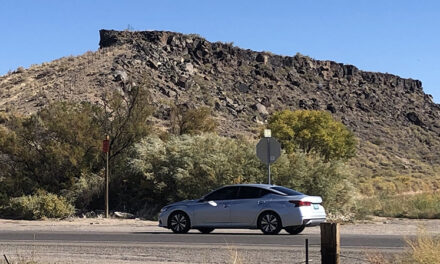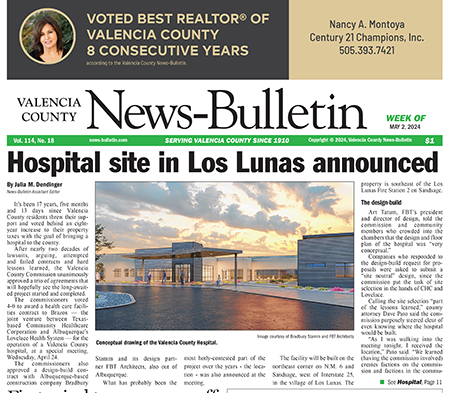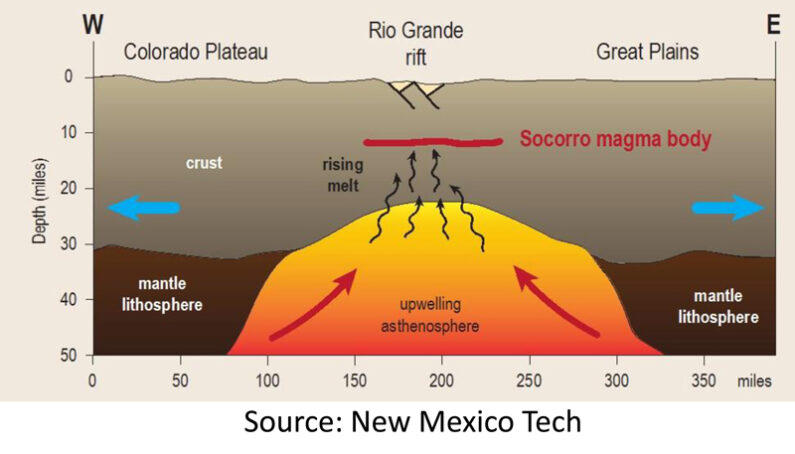
That magma body is a pancake-like feature, about 1,300 square miles in area (about the size of Valencia County), about 500 feet thick and at a depth of 12 miles. With a temperature of about 2,000° F, it is centered under Socorro with its northern edge reaching under Valencia County.
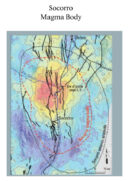
The magma is associated with small earthquakes, typically less than 3-4 magnitude, with the exception of a 1906 event, estimated at a magnitude 6.
The magma body causes the surfaces of the earth over the northern part of the body to rise at a rate of up to about one inch every 10 years. This was measured by comparison in the 1970’s of the railroad grades surveyed in the 1900s and again in the 1970s, when the ground had risen by up to 6 inches. Detailed mapping of ancient topographic terraces also depicts the bulging up of the earth surface over the magma body, and measurements by precise GPS instruments confirm the on-going bulging.
Scientists are monitoring the magma and estimate that there is no imminent danger of eruption.
(Paul Parmentier, a certified professional geologist retired from California and living in Los Lunas, shares the rich geologic features in Valencia County. He earned a Bachelor of Science degree in geology from Belgium and a master’s degree in geochemistry from Japan. The Geology Landscapes of Valencia County are featured monthly.)

